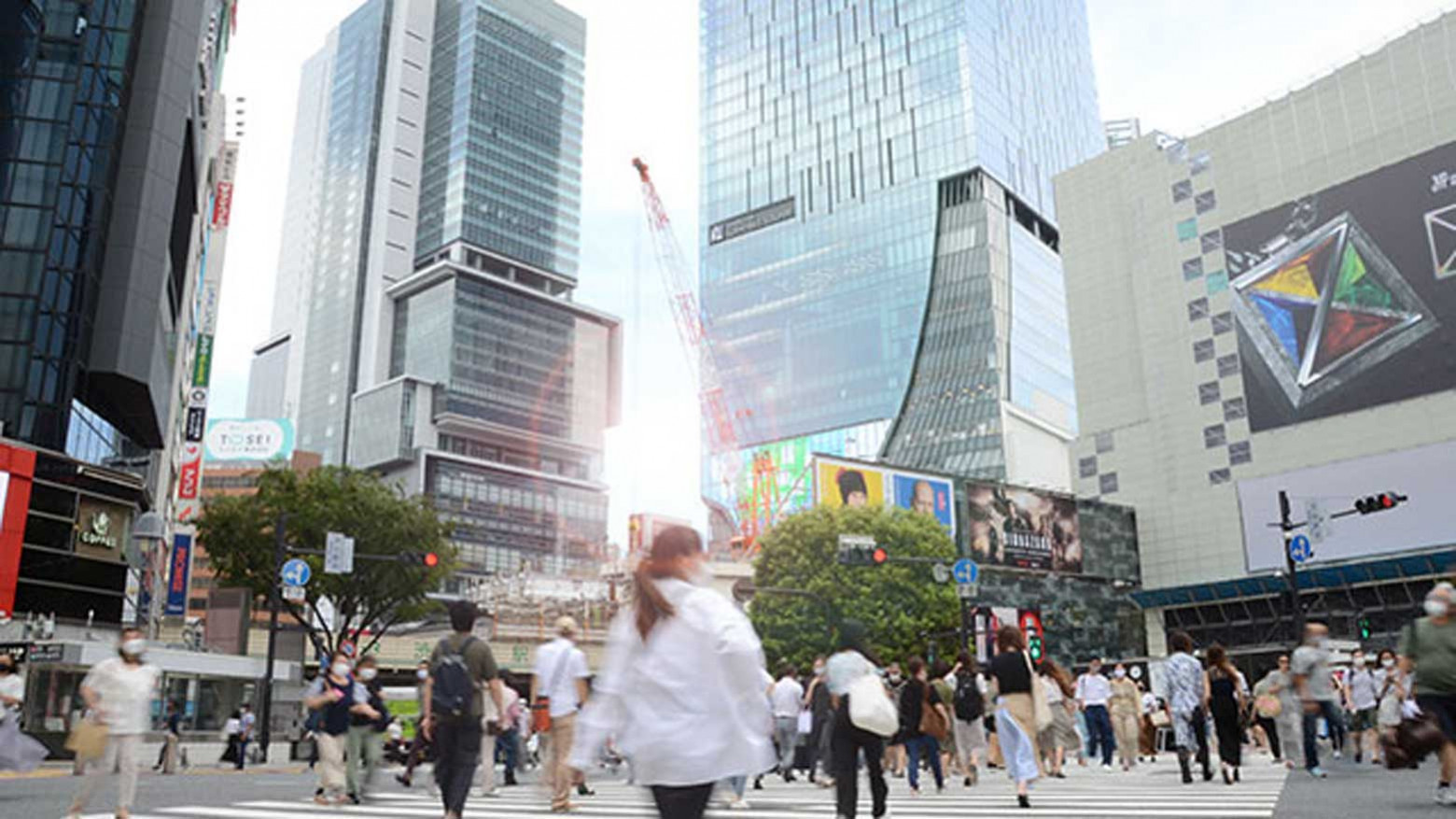Mazy structure
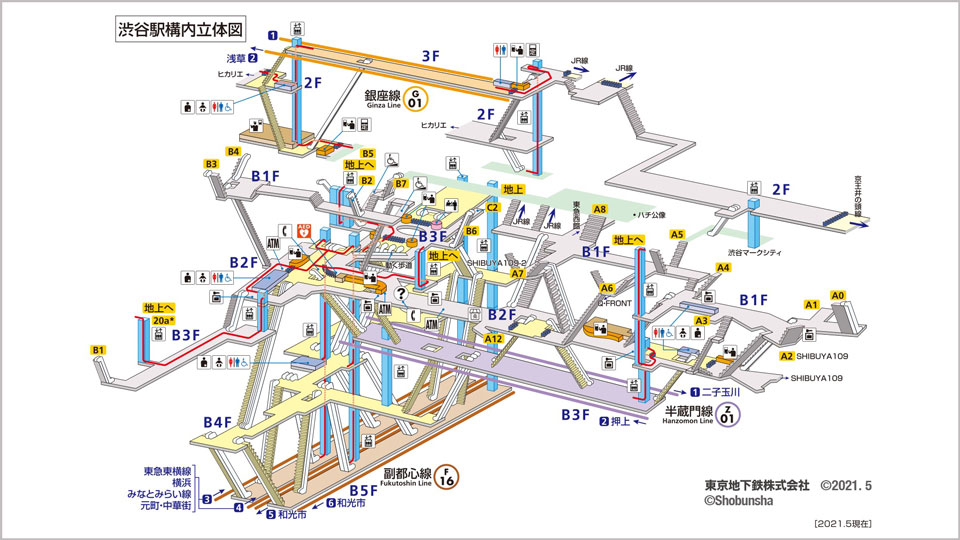
Even in Japan, a country where tangled, disordered stations are common, Shibuya is an outlier. Switching from the Ginza to the Fukutoshin line, for example, involves navigating from the third floor, the station’s top level, to the fifth underground level. In between is a maze of stairs, elevators, and escalators, with no direct way up or down.
100 years of history
Tamura Keisuke, an architect and professor at Showa Women’s University, says the complex structure is a result of the area’s topography.

Shibuya is a valley and the station was built at the bottom of it in 1920. At first, this was not a problem as the only lines passing through were the JR Yamanote line and a local streetcar service. But as other trains were extended into the area, the lack of surrounding flat land proved to be a logistical issue.
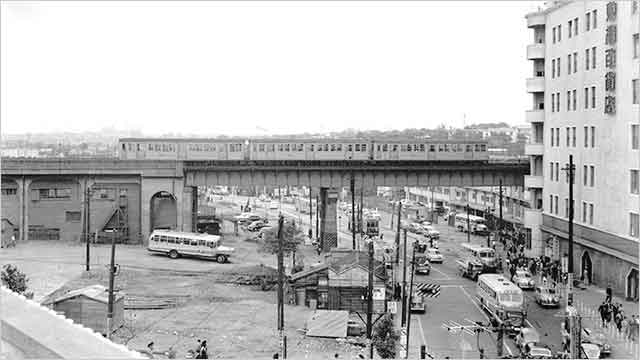
In 1938, Shibuya was added to the Ginza subway line. Since the route passed through the rest of Tokyo at a shallow depth, the tracks came out above surface level near Shibuya. As a result, the platform had to be built at a higher level than the existing station.
This sort of construction problem became more common as Tokyo’s population started to shoot up in 1975. More lines passed through Shibuya, including the Hanzomon subway line and the Tokyu Den-en-toshi line, transforming the station into a major transit hub. Meanwhile, the structure of the building became increasingly complex.
“The intricate construction is a result of makeshift extensions and renovations to handle growing ridership,” says Tamura. “Today’s Shibuya Station is the result of 100 years of growth.”
Shibuya Station was made even more complex in 2013 when the Tokyu Toyoko line platform was relocated from the second floor to the fifth underground level. This meant roughly 400,000 additional passengers were now navigating the underground passages, adding to the rush hour chaos.
There were as many as 20 exits leading from the underground passages to ground level and the rail operators received about 400 complaints about the layout that year.
To solve the issue, the operators and the government launched a renovation project in 2019. The first step was to make the exits easier to locate. The train operators divided the station into four areas, A to D, with numbered exits in each area. This reordering helped reduce the number of complaints in 2020 to about 40.
“Aerial corridor”
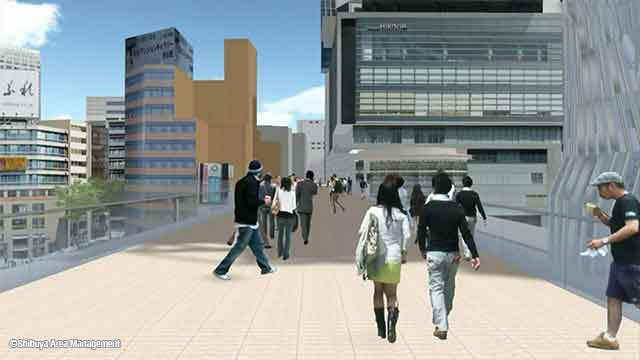
But the main goal of the renovation project is the construction of a sprawling pedestrian deck aimed at simplifying aboveground access to the station. On July 15 this year, a portion of the so-called “aerial corridor” was unveiled. The 200-meter-long stretch passes through the Shibuya Hikarie building and runs parallel to Miyamasuzaka, one of Shibuya’s main streets.
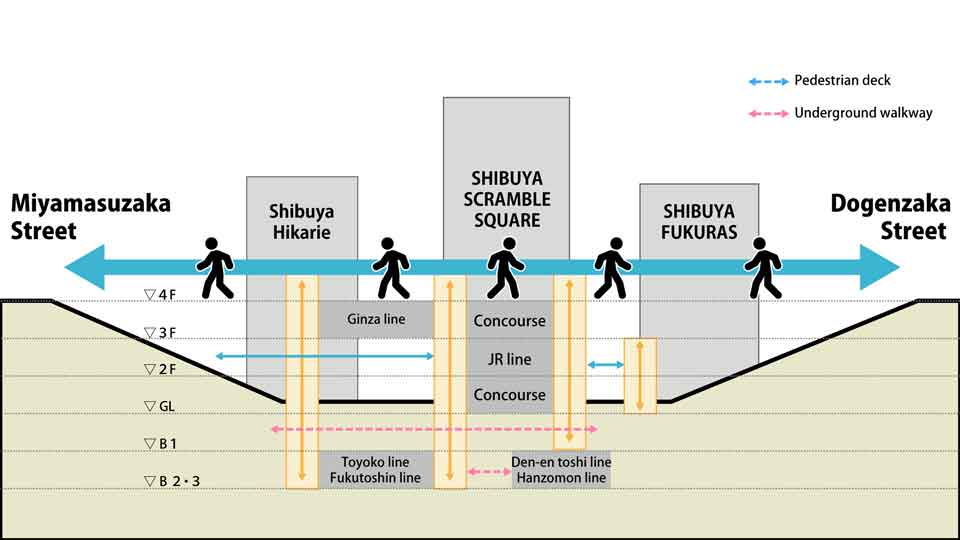
By 2027, the deck will be extended to nearby high-rises Shibuya Scramble Square and Shibuya Mark City. Once completed, the aerial corridor will stretch 800 meters across the valley, with elevators and escalators facilitating access.
Turning point in Shibuya history

Kurose Nozomi of the Tokyu rail company is involved in the renovation project. She hopes the aerial corridor will help form a new image of Shibuya.
“The pedestrian deck will put together areas that are currently divided and hard to reach,” she says. “Shibuya Crossing is a major attraction for foreign tourists now, but by 2027, the sight of people walking on the aerial deck might become the symbolic image of Shibuya.”
Professor Tamura also believes the renovation could be a decisive point in Shibuya’s history.
“Shibuya was made by a patchwork of impromptu projects undertaken in response to rapid social development,” he says. “This is the first time the area or the station has been designed and redeveloped with a long-term perspective in a fully coordinated manner. I think the project will turn Shibuya into a more sophisticated town.”
From underground maze to aerial corridor, a change in the flow of pedestrian traffic could lead to a dramatic transformation of one of Japan’s most famous neighborhoods.
